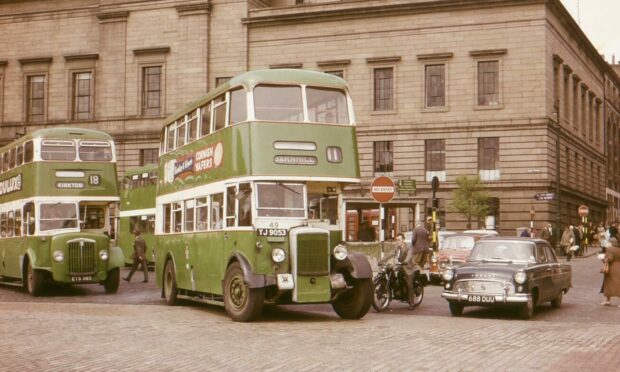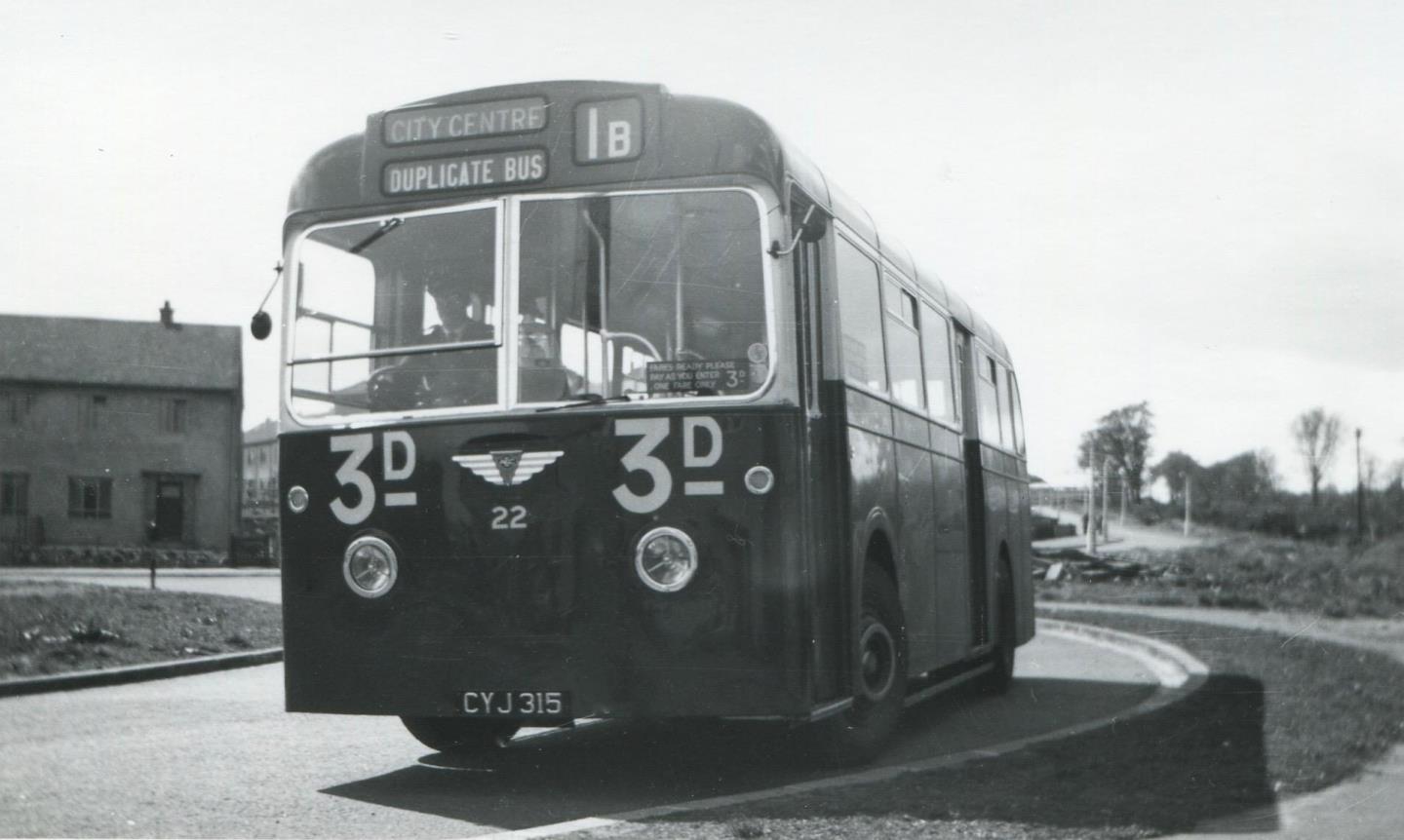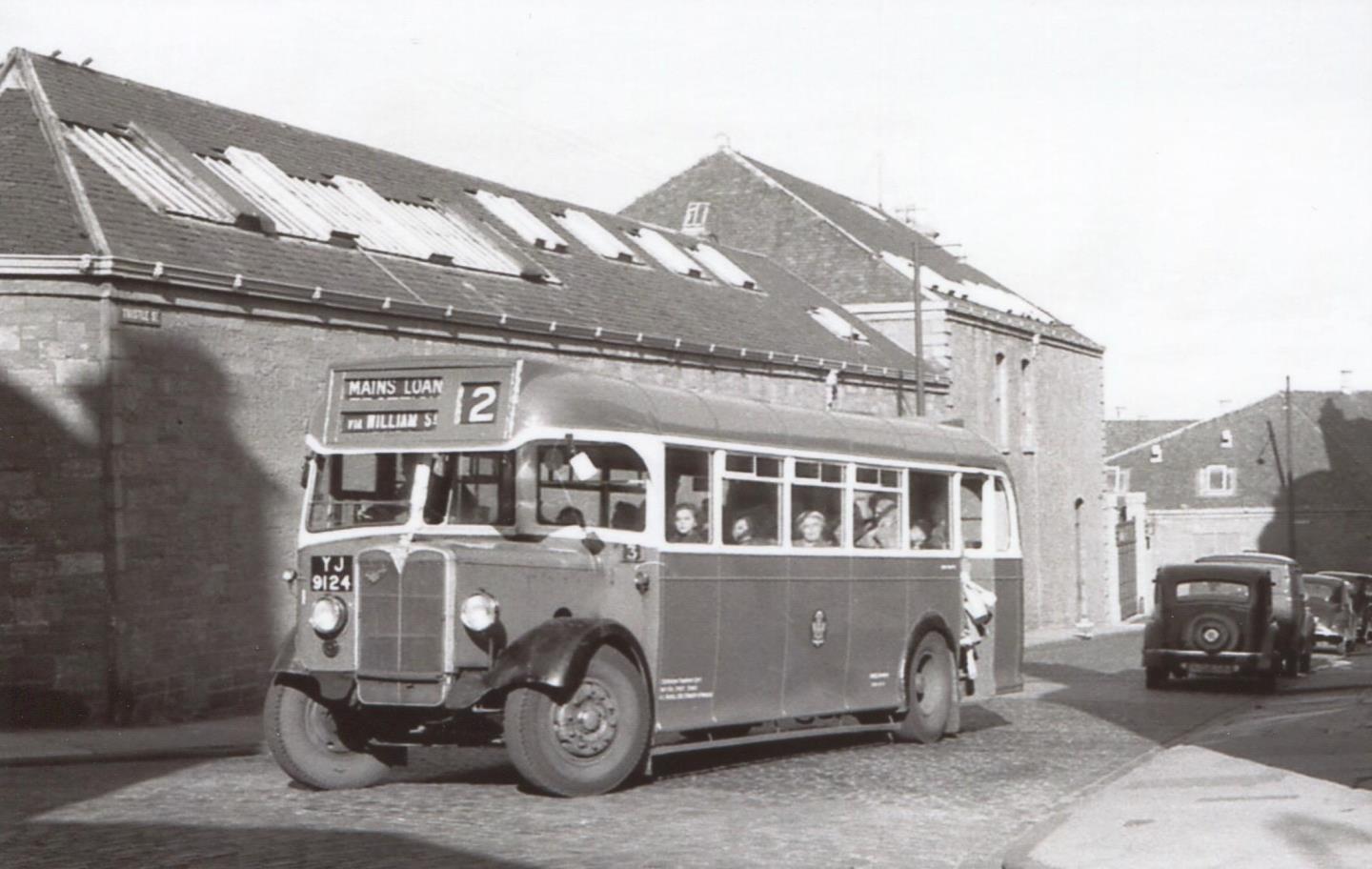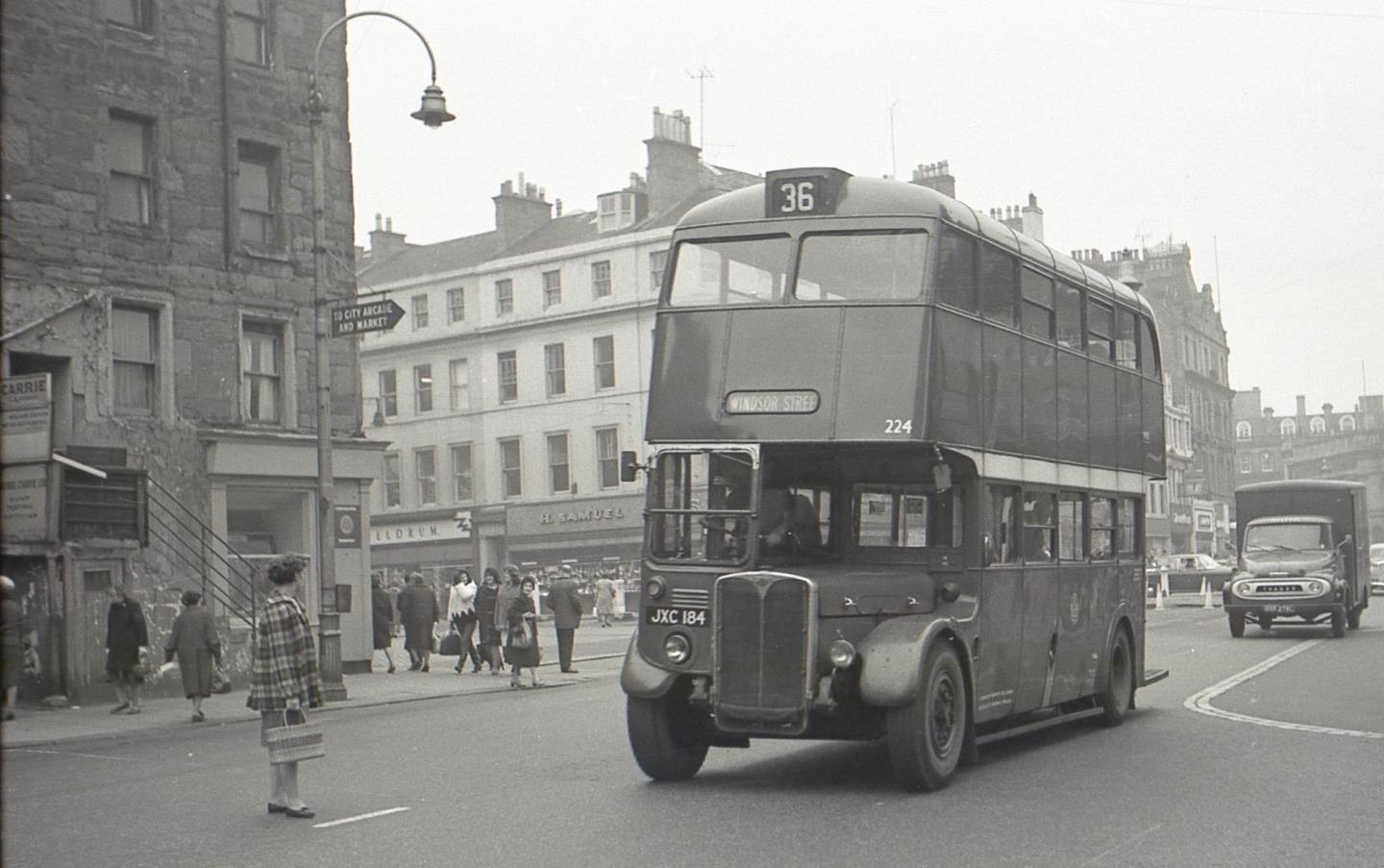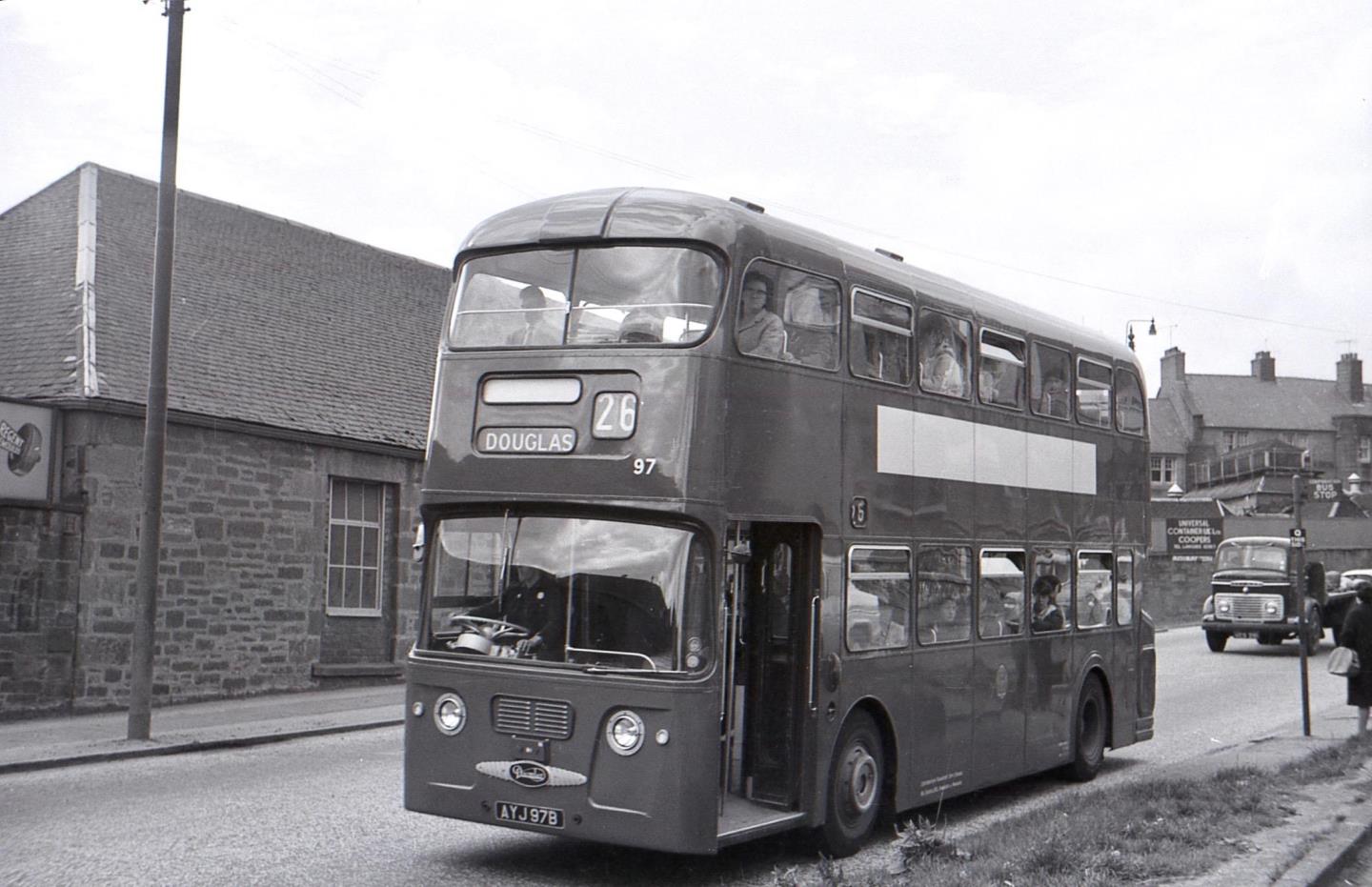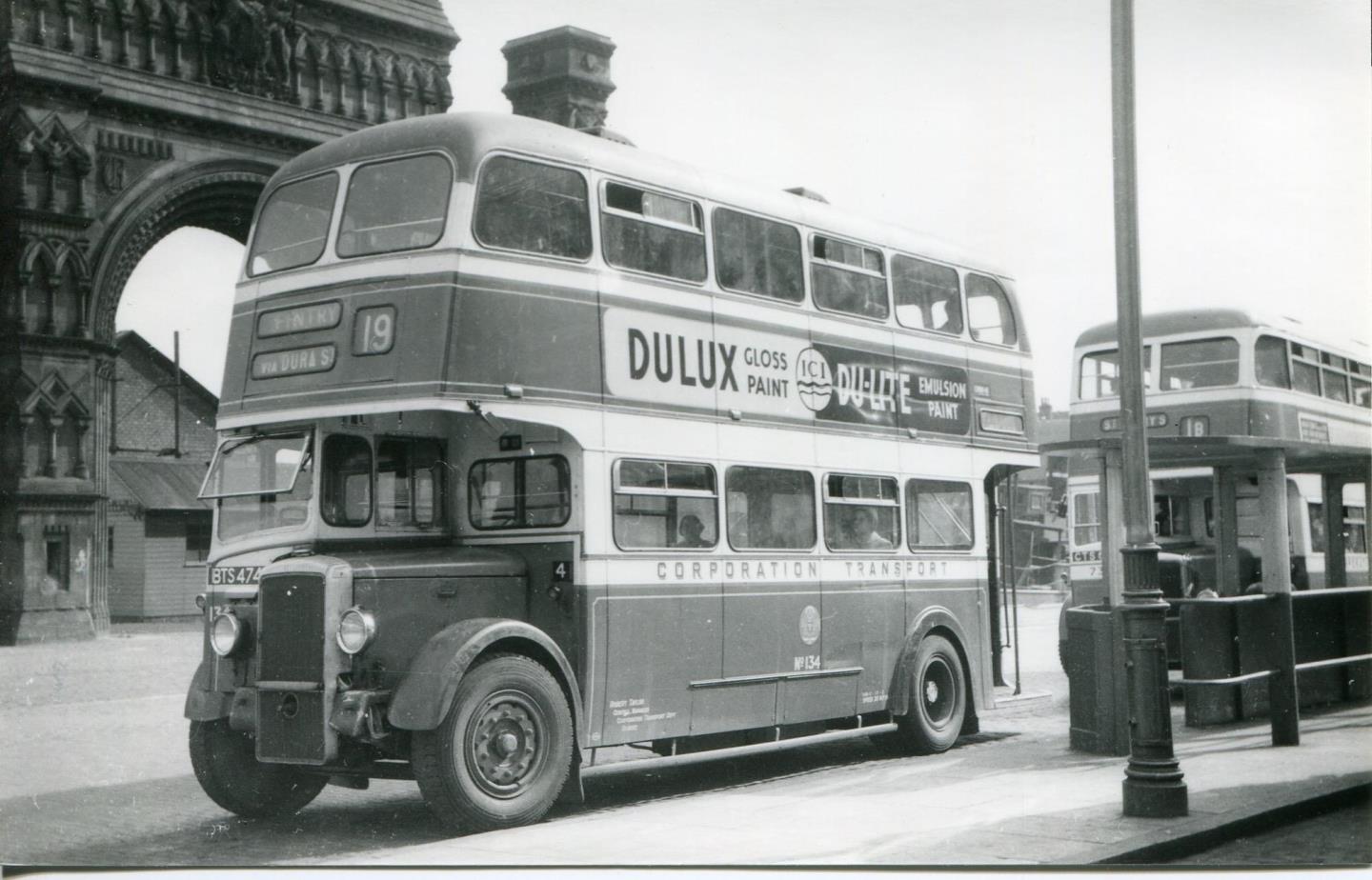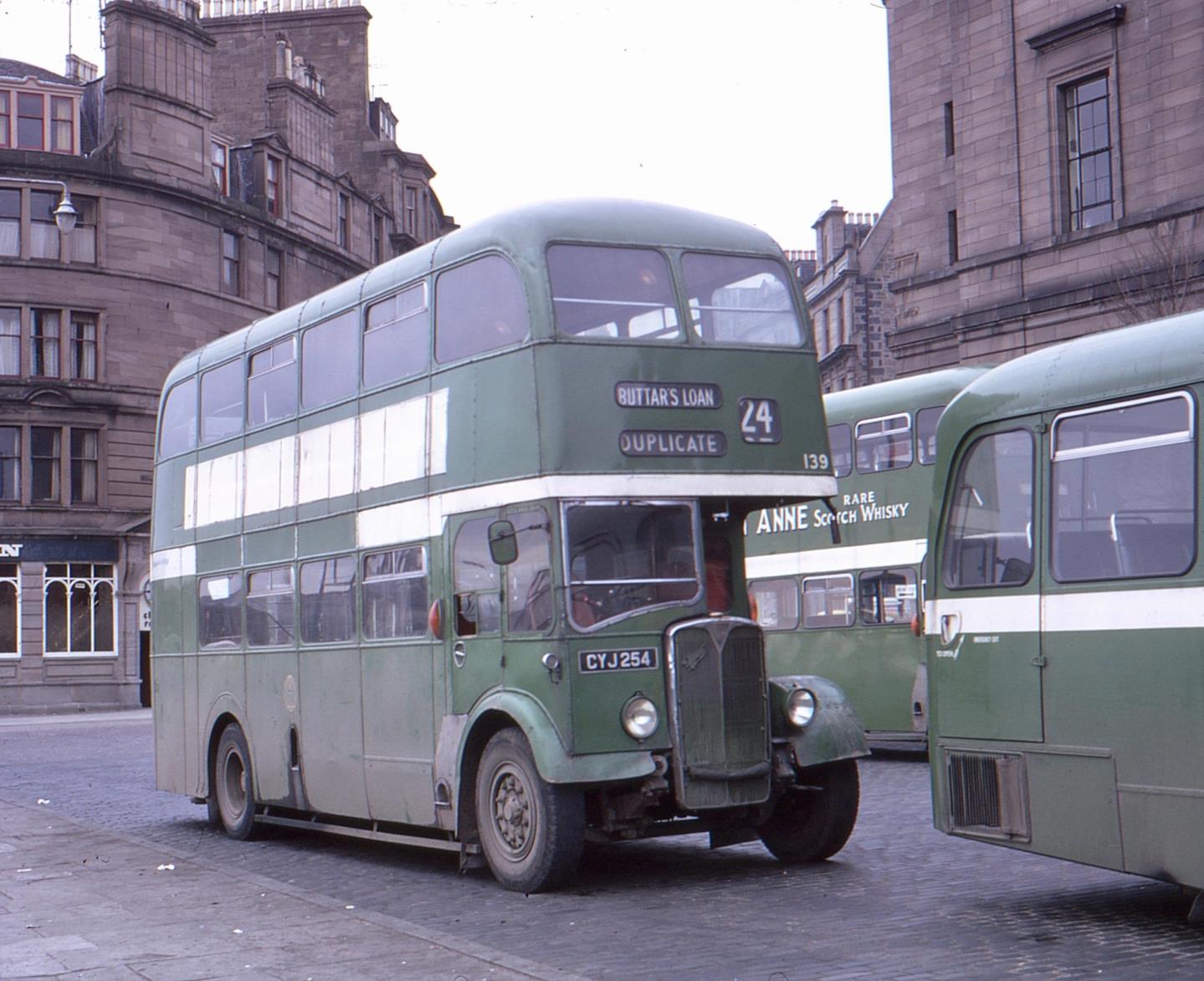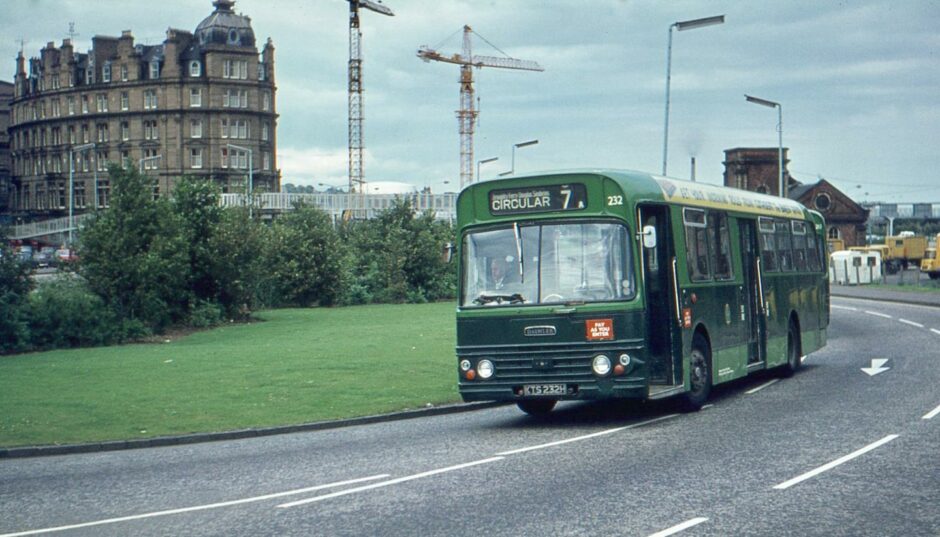The buses belong to a bygone era and these evocative shots will take readers on a misty-eyed journey through post-war Dundee.
Derek Simpson has always had a fascination for Dundee buses and has collected 10,000 photographs of the city’s fleet during his lifetime.
Derek has now selected 158 of his favourite images from 1945 to the 1970s for his new book that will trigger nostalgia for the glory days of bus travel.
Dundee Buses – Going Back to our Routes also tells the stories of how services in the city grew following the building of new housing schemes.
Originally this was a hobby for Derek, as he worked in a bank for 40 years before retiring and becoming a trustee at Dundee Museum of Transport.
The rest is history.
Derek decided to compile his new book following the success of Dundee Buses – From Green to Blue, which was released in 2020.
“I thought this time I would look at buses that arrived after the Second World War that would go on to serve Dundee until the late ’60s or early ’70s, in some cases,” he said.
“Added to this, how the bus services were formed is always something that has fascinated me.
“As a youngster growing up in the ’60s, seeing a bus with the words ‘circular’ on its destination meant very little to me, but I knew it went to exotic places like Broughty Ferry, Douglas and Hilltown, so it couldn’t be all bad, could it?”
Derek said feedback from his first book encouraged him to write a follow up after being surprised by the public’s nostalgia for Dundee’s buses and street scenes.
“Being a life-long bus enthusiast I always felt that Dundee lacked any comprehensive and informative bus history books,” said Derek.
“Most other major cities in the UK have good coverage and my city always felt like the poor relation in comparison.
“There have been a few books but most lacked detail and some actually had untruths or unfounded opinions, both of which wound me up.
“When I retired after 40 years in banking I felt it was time to try to right this wrong.
“My first book looked at the period from 1955 to the mid-70s when Dundee was subsumed into Tayside, which provoked a change in the colour from green to blue.
“This was a period of huge social, economic change, travelling habit and buses so I felt there was plenty for me to get my teeth into.
“The second book was a product of the first, as I had so much left that I felt I could easily compile another looking from 1945 until the early 1970s.
“I chose to look at what the public was travelling on and how the city’s bus routes evolved since their inception.
“Some Dundee routes are still numbered the way they were in 1960, for example, so I felt that unless I told these stories our transport history would be lost or, at best, buried.”
Derek’s new book features a mixture of black and white images and colour photographs from different parts of Dundee over the three decades.
Why do people have such nostalgia for Dundee buses in past times?
“Buses are a vehicle of the people,” said Derek.
“Mostly everybody – especially in a ‘less affluent’ city like Dundee – will have had no option but to travel on them and consequently they worm their way into our psyche.
“The 1950s and 1960s, in my opinion, were certainly the glory days of bus travel in Dundee, if not without its share of challenges.
“Bear in mind it was a major employer in Dundee with over 1,000 staff and 240 buses.
“Contrast that today with an Xplore fleet that will struggle to hit 90 buses.”
Derek was told many stories about life on the buses during his research including gang rule becoming a major headache for crews in the ’60s and ’70s.
“The police would at times use the bus service to get around when going to and from work or going to trace someone then going back to their own beat by bus,” he said.
“The conductors appreciated a uniformed presence, especially at night.
“The ‘polis’ got on for free, that was the deal.
“During the ’60s and early ’70s, gangs were a major headache for the crews, with assaults and abuse commonplace – to the extent that some services had curfews imposed upon them.
“Often when the police were called, the bus driver was told to ‘take this bus to Bell Street’ which saved the police calling up the ‘black Maria’ van for the troublemakers.”
Derek said this approach certainly silenced the troublemakers but it almost became normal to see a bus entering Bell Street police station at weekends.
He said the major difference from today was that bus frequency was increased in those days on some routes as the cinemas, pubs and dance halls were emptying.
The change in people’s social attitudes and mobility would have major implications as the 20th Century progressed with cars and home entertainment taking over.
The next 50 or so years would see almost as many changes and innovations to buses and services in Dundee as had the preceding post-war years.
Copies of Dundee Buses – Going Back to our Routes, priced £19.95, are available now from the Dundee Museum of Transport website.
More like this:
Meet the traditional signwriter who painted Dundee’s bus fleet for decades
All aboard for a journey through the history of Dundee’s Maryfield tram depot
